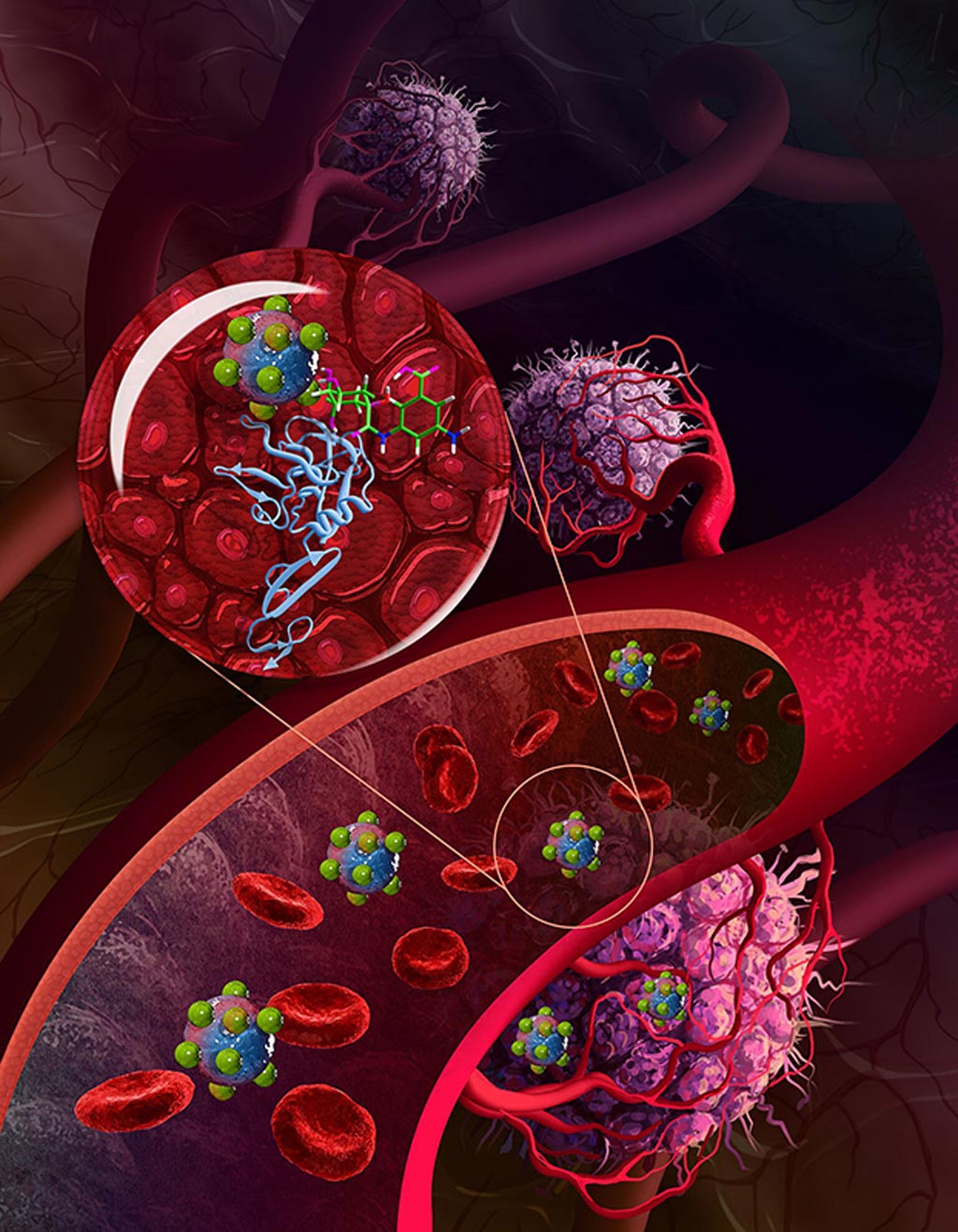Modified Nanoparticle Drug Carriers Target Solid Tumors in Model
By LabMedica International staff writers
Posted on 27 Nov 2018
Cancer researchers used novel targeted nanoparticles to transport drugs to solid tumors when the absence of a persistent EPR (enhanced permeability and retention) effect, acted as an access barrier negatively affected the effectiveness of drug delivery.Posted on 27 Nov 2018
The EPR effect is a controversial concept by which molecules of certain sizes (typically liposomes, nanoparticles, and macromolecular drugs) tend to accumulate in tumor tissue much more than they do in normal tissues. The general explanation that is given for this phenomenon is that, in order for tumor cells to grow quickly, they must stimulate the production of blood vessels. Tumor cell aggregates as small as 150–200 micrometers, start to become dependent on blood supply carried out by newly formed blood vessels for their nutritional and oxygen supply. These newly formed tumor vessels are usually abnormal in form and architecture. Furthermore, tumor tissues usually lack effective lymphatic drainage. All of these factors lead to abnormal molecular and fluid transport dynamics, especially for macromolecular drugs. This phenomenon is referred to as the "enhanced permeability and retention (EPR) effect" of macromolecules and lipids in solid tumors.

Image: Researchers developed a technique to prepare polyol-modified nanoparticles that could locate cancerous cells and tumors via the blood vessels surrounding the tumors (Photo courtesy of Purdue University).
Investigators at Purdue University (West Lafayette, IN, USA) looked at the situation in which the absence of a persistent EPR effect functioned as an access barrier to tumors and negatively affected the effectiveness of nanoparticle (NP) drug carriers.
They reported in the November 9, 2018, online edition of the journal Small that when NPs were modified with a quinic acid (QA) derivative, they acted as synthetic mimics of selectin ligands. Selectins are a family of cellular adhesion molecules involved in constitutive lymphocyte homing, and in chronic and acute inflammation processes, including post-ischemic inflammation in muscle, kidney and heart, skin inflammation, atherosclerosis, glomerulonephritis, lupus erythematosus, and cancer metastasis.
The investigators found that QA‐decorated NPs (QA‐NP) interacted with human umbilical vein endothelial cells expressing E‐/P‐selectins and induced a transient increase in endothelial permeability to translocate across the layer. QA‐NP reached selectin‐upregulated tumors, achieving greater tumor accumulation and paclitaxel (PTX) delivery than polyethylene glycol‐decorated NPs (PEG‐NP).
Repeated dosing of PTX‐loaded QA‐NP for two weeks resulted in complete tumor remission in 40–60% of MDA‐MB‐231 tumor‐bearing mice, while those receiving control treatments died from the tumors.
"Chemotherapy can be almost unbearable for most patients and we want to change that. Our method better targets tumors so lower dosages are required and the drugs do less damage to normal tissues," said senior author Dr. Yoon Yeo, professor of industrial and physical pharmacy at Purdue University. "The traditional approach is similar to a delivery driver trying to drop off a package to a certain person without knowing their specific address. Our new approach provides directions to find the specific address to deliver the chemotherapeutic drugs."
Related Links:
Purdue University













